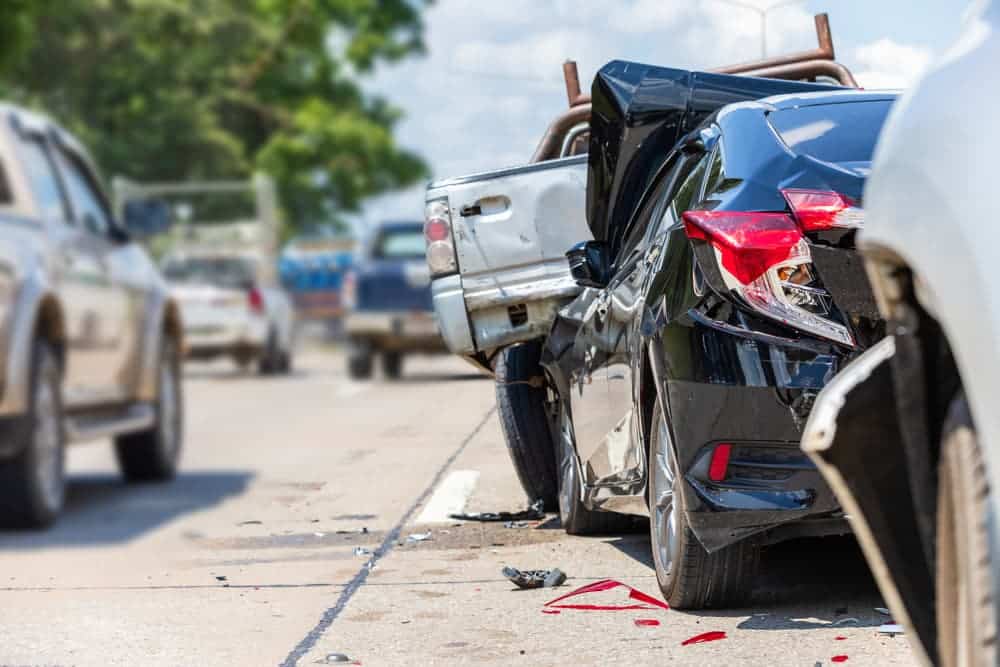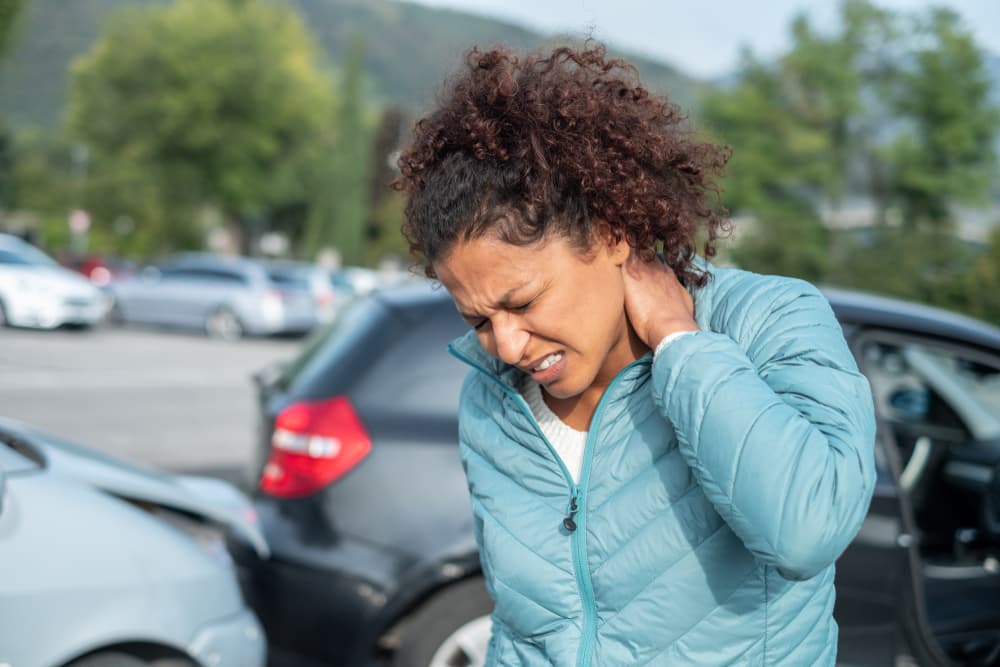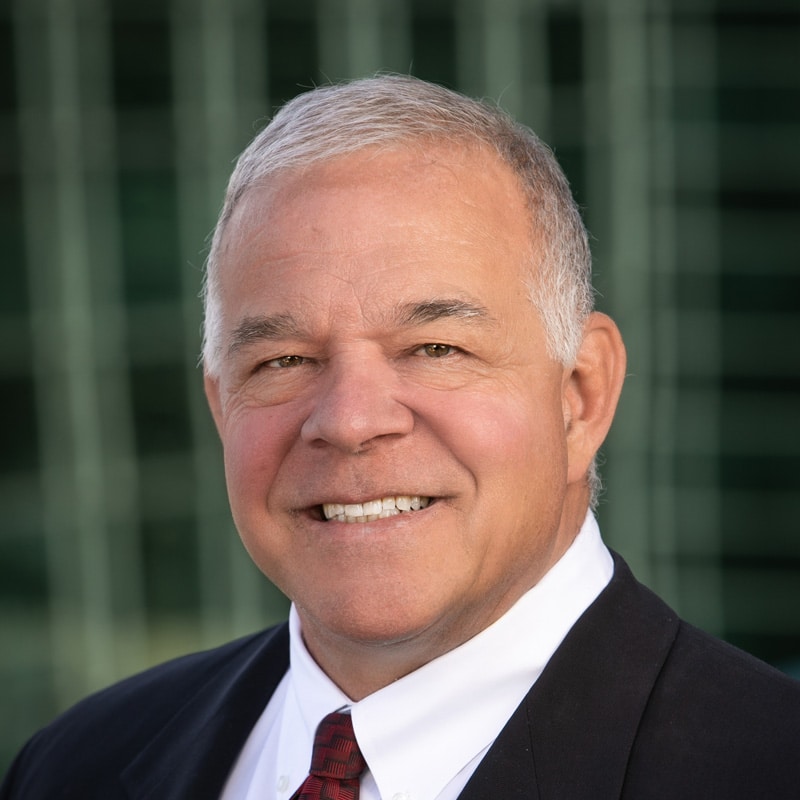Someone Rear-Ended Me and I Hit the Car in Front of Me. Who Is Liable?
Few traffic scenarios are as frustrating as having someone rear-end you and push your vehicle into the car in front of you. You might hurt, your car needs repairs, and now you must figure out who to blame.
Perhaps you’re asking yourself, “Who is responsible?” “How do I prove it?” “Do I need a lawyer?”
The answer to that last question is yes, and a Phoenix car accident lawyer will answer the first two questions for you.
Who Is at Fault in a Multi-Car Rear-End Collision?

If someone rear-ends you, and you hit the car in front of you, determining fault requires a complex investigation.
Multi-vehicle accidents can muddle liability because factors such as the force of impact, the timing of events, and each driver’s actions will come into play. It is not merely a question of who hit whom. Determining fault involves understanding the chain of events.
Substantial evidence, including detailed police accident reports, witness testimonies, crash reconstruction diagrams, and traffic camera footage may need to create a clear picture of events.
An experienced injury lawyer can identify and preserve valuable evidence and build a robust case that protects your rights after a multi-car rear-end accident.
When Is the Rear Driver Responsible?
In most rear-end accident cases, the rear-most driver is responsible. This is because they control how closely they follow behind another vehicle and how soon they slow or stop when necessary.
Here are some scenarios where you can hold the rear driver responsible for rear-ending another vehicle and causing a chain-reaction accident:
- The rear driver was not paying attention and failed to notice the cars stopping in front of them.
- The rear driver was following too closely and crashed hard enough into the vehicle ahead to push the middle vehicle into a third car.
- The rear driver was speeding or driving aggressively and unable to stop in time to avoid rear-ending other vehicles.
- The rear driver was under the influence of alcohol or drugs, which impaired their depth perception or reaction time and led them to crash.
- The rear driver fell asleep at the wheel and crashed into the cars ahead.
- The rear driver had faulty brakes that failed to stop the vehicle properly or a defective airbag that deployed suddenly and caught them by surprise.
- The rear driver intentionally collided with another vehicle in an act of road rage, pushing the middle vehicle into the back of a third car.
- The rear driver was traveling too fast or turning too sharply on icy, wet, or slippery roads and could not slow or stop safely.
When Is the Front Driver Responsible?
Although the rear driver is usually liable for a rear-end crash, there are some situations in which the front driver might bear partial or total responsibility.
A front or leading driver could bear fault for a multi-car rear-end collision if:
- The front driver stopped suddenly or slammed on the brakes for no reason, surprising the middle driver and the driver behind them.
- The front driver cut off or swerved in front of the middle driver at the last minute, leaving inadequate stopping distance.
- The front driver began driving well below the speed limit, forcing the middle car to brake hard to avoid a collision.
- The front driver reversed improperly from a driveway or parking spot into oncoming traffic, causing a chain reaction behind them.
- The front driver failed to signal a turn or lane change, forcing the middle driver to brake hard in front of the rear-most driver.
- The front driver was driving recklessly by speeding up and slowing down erratically, preventing the middle driver from stopping safely.
- The front driver was under the influence of alcohol or drugs, which impaired their control of the vehicle or caught other drivers by surprise.
- The front vehicle had faulty brake lights, so the middle driver could not see they were stopping in time to avoid rear-ending them.
- The front driver cut across multiple lanes abruptly to turn or exit the road, forcing the middle driver to collide with them or brake suddenly.
- The front driver had a dangerously large load on the top or back of their vehicle, preventing the middle driver from seeing traffic slow or stop.
When Can the Other Drivers Hold You Responsible as the Middle Driver?
The other drivers in a rear-end accident might accuse you of contributing to the crash, even though you were just caught in the middle.
For instance, other parties might claim you contributed to the accident because:
- You followed the front car too closely before the rear driver hit you from behind, contributing to or worsening the chain reaction.
- You braked suddenly or erratically for no apparent reason, resulting in the rear car hitting you and pushing you into the front car.
- You accelerated or changed lanes improperly just before the rear vehicle hit you, making the chain reaction collision unavoidable for the other drivers.
- You did not pay attention or check your rearview mirror before braking.
- Your vehicle had faulty brakes or another mechanical issue that impaired your ability to slow down or stop safely.
- You were under the influence, distracted, or dangerously drowsy when the incident occurred, which impaired your ability to respond appropriately.
- You were driving well below the speed limit in a hazardous manner.
- You made an illegal maneuver like a U-turn or improper lane change that contributed to the chain reaction accident.
If another party accuses you of committing any of these infractions and contributing to the accident, a knowledgeable attorney can help.
Your lawyer can present evidence showing that you are not at fault. Your attorney might work with experts like accident reconstruction specialists to evaluate the crash and prove that you did nothing to contribute to it.
Your attorney can also communicate with other parties and their insurance providers on your behalf, so you don’t have to worry about accidentally saying something that makes you seem responsible.
If you must speak to insurance adjusters or opposing parties’ attorneys, your lawyer can help you understand what to expect and coach you on what to say or not say.
When Do Third Parties Contribute to Chain Reaction Rear-End Accidents?
In some situations, other parties could bear partial or full responsibility for a chain-reaction rear-end crash, such as:
- Other Motorists: Even if they weren’t part of the collision, other drivers could be at fault if their actions contributed to the accident. For example, if a driver swerves erratically and forces the front car to stop suddenly, causing a chain reaction, that driver could be liable.
- Pedestrians: A pedestrian might be at fault if they dart into traffic illegally, prompting the front driver to brake suddenly and set off a rear-end collision.
- Cyclists: Like pedestrians, cyclists can be responsible if they navigate traffic in a way that violates road rules, leading one driver to make an abrupt stop and triggering a multi-car pile-up.
- Manufacturers: Vehicle or auto parts manufacturers could be at fault if a defect in one of the cars, such as faulty brakes or steering components, contributes to the rear-end accident.
- Mechanics: If a mechanic recently serviced one of the vehicles and did a substandard job, such as improperly installing brakes, they could be liable for the resulting rear-end collision.
- Bars or Liquor Stores: You can hold these establishments at fault if they served alcohol to a driver who was clearly intoxicated, and that driver’s impaired state led them to cause the rear-end collision.
- Local Governments: Municipal or state governments could be liable if poorly maintained roads, lack of proper signage, or malfunctioning traffic signals contributed to the chain-reaction accident.
Whiplash: A Common Consequence of Rear-End Collisions

Whiplash is one of the most common injuries among victims of rear-end collisions. The sudden and forceful movement of the head and neck, typically due to rapid acceleration or deceleration, causes whiplash by stretching and injuring soft tissues in the neck.
This injury frequently appears even in low-speed collisions since whiplash comes from the abrupt jolting of the head or neck, which can occur any time vehicles collide.
The neck’s vulnerability is due to its capacity to extend beyond its normal range of motion during collisions. Even with the use of seat belts and headrests that aim to minimize crash injuries, the sudden force can overcome these protective measures, leading to whiplash injuries.
The consequences of whiplash include pain, reduced range of motion, and headaches, often requiring extensive treatment and rehabilitation. The symptoms often do not appear immediately, sometimes developing hours or even days after the accident.
This delayed onset further complicates matters, as individuals might initially overlook the need for medical evaluation.
Even if you already sought medical attention after a rear-end accident, be sure to tell your doctor if you develop any new symptoms that indicate whiplash.
A physician can document your symptoms, diagnose your condition, and recommend appropriate treatments. The records of your visit and official diagnosis can provide strong evidence for any injury claims you file after the accident.
Demanding Compensation After a Rear-End Accident
The consequences don’t end at the scene if you are in a rear-end accident. Many rear-end crash victims develop debilitating and costly injuries that affect them for weeks, months, or even years afterward.
You can file an accident claim demanding monetary compensation for the following types of losses after a rear-end crash:
- Medical Expenses: This includes immediate costs for medical needs and treatments like emergency room visits, hospital stays, medications, therapy sessions, and ongoing care.
- Future Medical Treatment Costs: If your injuries lead to long-term or permanent conditions, you could seek compensation for future medical treatments such as surgeries or pain management programs.
- Lost Income: If the injury forces you to take time off work, you could claim compensation for lost income or benefits.
- Future Lost Earnings: This includes compensation for projected losses of earning capacity due to long-term disabilities resulting from the accident.
- Pain and Suffering: This refers to the physical pain and emotional distress you suffer following the wreck, such as chronic pain from whiplash.
- Loss of Enjoyment of Life: This includes reduced quality or enjoyment of life due to chronic injuries that prevent you from engaging in hobbies or activities you once enjoyed.
- Loss of Consortium: If your injuries affect your relationship with your spouse, they could claim loss of consortium, which is the loss of companionship and support due to your injuries.
Why You Need a Lawyer After a Multi-Car Rear-End Accident

Robert W. Boatman, Car Accident Lawyer
If someone rear-ends you, sending your vehicle forward into a third car, you should immediately contact a lawyer.
Here are some ways an experienced personal injury attorney can help with your chain reaction rear-end accident case:
- Evaluating Your Case: A lawyer can review the accident details to assess the viability of your claim and how much compensation you could recover.
- Gathering Evidence: They can collect all necessary evidence, including police reports, witness statements, and video footage, to build a strong case.
- Communicating With Insurance Companies: Lawyers can handle all communications with insurance companies so you avoid making statements that could jeopardize your claim.
- Determining Liability: Your attorney can work to establish the fault of other drivers or third parties so you can pursue all available sources of compensation for your losses.
- Quantifying Damages: Your attorney can calculate all your damages, including medical expenses, income losses, and pain and suffering, so you can seek appropriate compensation when filing your claim.
- Negotiating Settlements: Lawyers can use their negotiation skills to argue for fair settlements from the insurance company or the at-fault party.
- Representing You in Court: If necessary, a lawyer can represent you in court, presenting your case to a judge or jury.
- Consulting Experts: Your attorney might consult physicians or accident reconstruction experts to obtain testimony that supports your claim.
- Advising You on Legal Decisions: They can offer you advice on any settlement offers and whether to accept them or proceed to trial.
- Advocating for You: Above all, your lawyer will advocate on your behalf, working tirelessly to protect your interests throughout the case.

